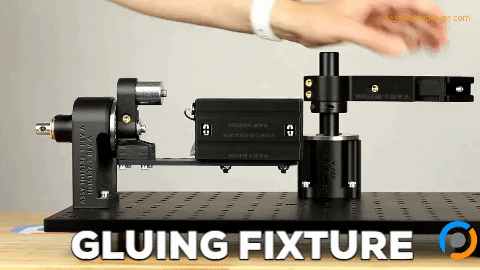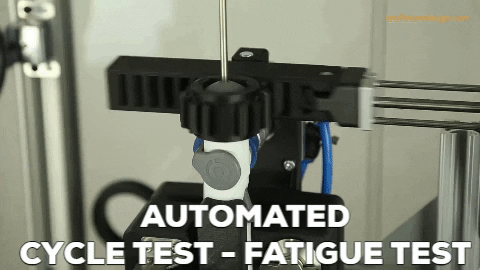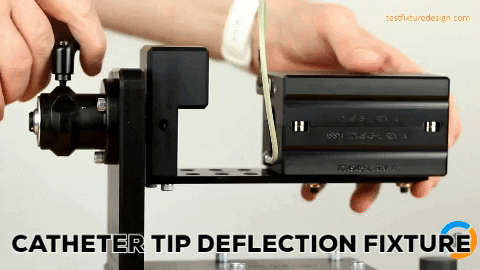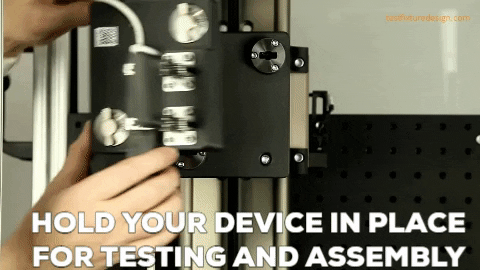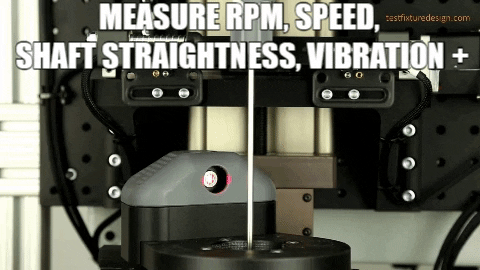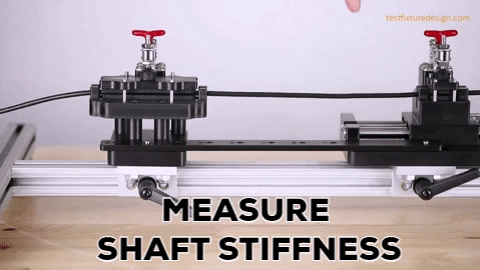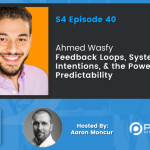S4E37 Troy Nergaard | Lightship – L1 Electric RV
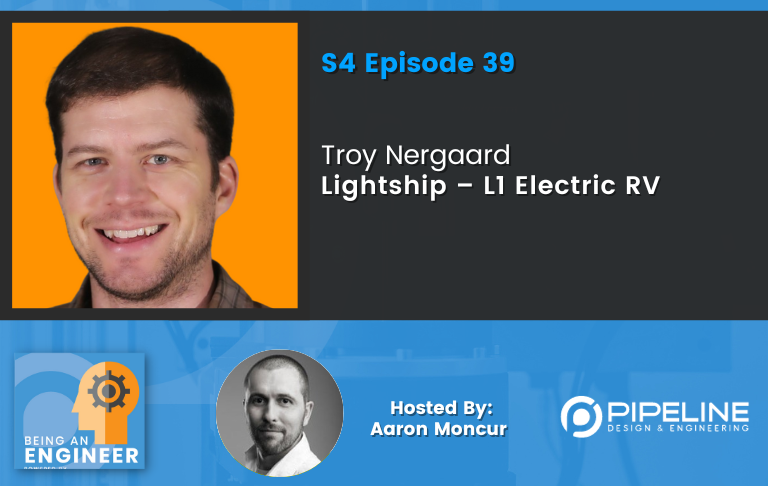
Who is Troy Nergaard?
Troy Nergaard has bachelor’s and master’s degrees in electrical engineering. He has held roles ranging from project engineer to CEO, and is currently the head of controls and embedded systems at Lightship, where he and his team are designing and producing an aerodynamic, battery-powered trailer that liberates travelers from the noise, emissions, and range anxiety of gas RVing.
Being an Engineer Survey link: https://www.surveymonkey.com/r/WHJ9SGD
Survey participants will be entered to win a Being an Engineer t-shirt. Five winners will be chosen and announced in our newsletter Wednesday, October 4th.
EXPAND TO VIEW EPISODE TRANSCRIPTION
SUMMARY KEYWORDS
vehicle, rv, lightship, engineer, great, towing, power, design, engineering, tow vehicle, troy, solar, product, propulsion system, aerodynamics, food truck, team, pieces, charge, controls
SPEAKERS
Troy Nergaard, Aaron Moncur
Aaron Moncur 00:00
We’ve been producing engaging content for the engineering community for over three years. Interviewing industry leaders like Jon Hirschtick, the founder of SolidWorks, our very own engineering manager, Michael Hadley, and numerous engineers, product developers and business professionals. But now, we want to hear from the most important people, our listeners, click the survey link in the show notes below to share your advice and help us grow the being an engineer podcast. Plus, by participating, you have a chance to win an exclusive being an engineer t-shirt submissions closed Tuesday, October 3rd, five winners will be chosen and announced in our newsletter on Wednesday, October 4th.
Troy Nergaard 00:42
And so we’ve got a challenge to figure out how do we keep our vehicle to the gross vehicle weight to something that is reasonable to still tow, but also provide all that functionality that we’ve been talking about?
Aaron Moncur 00:54
Hello, and welcome to another exciting episode of The being an engineer podcast. Our guest today is Troy Nergaard who has a bachelor’s and master’s degree in electrical engineering. Troy has held roles ranging from project engineer to CEO and is currently the head of controls and embedded systems at Lightship where he and his team are designing and producing an aerodynamic battery powered trailer that liberates travelers from the noise emissions and range anxiety of gas. RVing. Troy, thank you so much for being on the show today.
Troy Nergaard 01:43
Oh, thanks so much for having me, Aaron.
Aaron Moncur 01:46
Well, what made you decide to become an engineer?
Troy Nergaard 01:48
Yeah. I think this is because my dad told me he didn’t want me to take over his restaurant business. If that’s
Aaron Moncur 01:56
something you were contemplating?
Troy Nergaard 01:58
Well, I don’t know at that. He he told me that early on, but yeah, really, you know, so that sort of be looking for other options. And what did I like to do? You know, but I also I do have to give some credit to my dad, who I watched, you know, as restaurant tour, like, get his hands up, be afraid to get his hands dirty, was, you know, he is quite mechanically inclined, and you know, something broke, he was willing to take it apart and fix it. And, you know, you know, more than half the time, he was able to fix it. And you know, let’s say Jim a lot of money, but also saw that, you know, how things were made sometimes when I would watch him or just be around him. You know, and so that was that was the beginning of it. I also, you know, like a lot of engineers enjoyed Legos and puzzles, and it’s a lot of the usual things. But I think another thing I might contribute to it is, I started building in racing RC cars, kind of, you know, I don’t know exactly, maybe around 10 or 12, somewhere in the 10 to 12 range. And maybe it was because I wasn’t a good racer, we’ll get the racing part, but I actually liked building them more. You know, it really was cool to sort of really, and it’s where I learned a lot about servos, and motors and even batteries to some extent. Those are electric, you know, so it was my first electric vehicle. Really, it was my RC car. So
Aaron Moncur 03:16
Very cool. I’m just curious what kind of restaurant did your dad own or restaurants? Yeah,
Troy Nergaard 03:20
it was a family restaurant had a variety of foods started off as a pizza place, mostly but but it sort of evolved over time to have everything from breakfast to dinner, you know? So
Aaron Moncur 03:29
got it. All right.
Troy Nergaard 03:30
I worked there plenty. But But I’m happy with my career choice.
Aaron Moncur 03:36
Terrific. All right. Well, you you were a senior engineer, man, engineering manager at Tesla, you were also CEO at one point not at Tesla, but another company. And we’re also an advisor for several other companies. Something tells me that you probably have a lot of options open to you as far as where you want to work. What made you want to work at Lightship?
Troy Nergaard 04:00
Well, I appreciate that. There’s certainly a lot of good engineers out there. So finding an interesting job is not something that I take for granted. But I had the luxury of, you know, taking some time and really looking around, you know, when I was looking for, for my current role, and I was looking for a company where I can make an impact. I care a lot about the environment and sort of working in a way to help improve climate change, you know, and so I knew I kind of want to stay in the clean tech space. You know, I started talking to some network, you know, so my network and you kind of heard heard that Lightship name gets thrown out there. Turns out I knew some of them from my early days. So my days at Tesla, including the co founder, Toby and I think this is really what sold me. You know, I started talking to him, you know, and at first I was not sold on, you know, RV being, you know, being somebody that you He’s gonna make an impact. But turns out the market is much bigger than I expected. And the vision for the product was more than just an RV. And so that really got me excited. You know, and so talking to Toby re, sort of rien gauging with him, really reminded me what a great leader he is, what a good person he is, you know, and then I also got a chance to talk to Ben, the other co founder. And, you know, he’s the one with original vision. And that really, you know, he was clear, he was passionate about what we’re trying to do. And so that all sort of got me really excited about what he was doing. And and I think the last piece would be just that it was an early stage at that point, you know, I joined it with seven people in early 2022. And, you know, I really would have an opportunity to help shape the company, both from an engineering point of view, as well as from a cultural point of view. So that was also exciting to me.
Aaron Moncur 05:55
Yeah, that’s very exciting. At tell us a little bit about the background with Lightship and its flagship product, the the L one word, what’s the backstory?
Troy Nergaard 06:06
Yeah, well, this really sort of starts from food truck, food truck world, actually, and Ben sort of noticing as he was eating a food trucks every day, that, you know, they were noisy, they were polluting, and you hear you’re trying to have a lunch next to them. And it just, there’s really no reason for that, you know? And so his idea started, how can I replace that, you know, that generator, that diesel or gasoline generator, with the battery pack and power system that could easily supply power for all the appliances needed a food truck, he started looking into that into that a little bit more and realized, well, that would be great. The markets, not huge. What else is similar, and then that led him towards sort of RV space, which is much larger. And originally with the idea of just replacing the generator on an RV, and so that was the first prototype that was built was a small sort of packaged, you know, sort of drop in replacement for a generator that would give you power output with a little battery pack and inverter. And he built a prototype like that. And, you know, that was sort of the beginning the very beginning of Lightship. It was it was made clear, though, also that, you know that in itself, the you know, so dropping replacement for a generator wasn’t gonna be enough and that really sort of make things better and shake it up a little bit more, as you know, we need to design something from the ground up. And so he found Toby they, you know, they went up the road trip in an RV pulling an RV with an electric vehicle. And there’s a little story on our website about that, that’s interesting to read. But, you know, out of that came white ship and you know, the vision to let’s do this from the ground up, let’s do it better, in many ways. And you know, and we’ve been working at it now for a couple of years and you know, and have a long way to go but but have made huge progress.
Aaron Moncur 08:04
Terrific that that’s a great backstory. And I like kind of the the little tie in with the restaurant tour. I mean, if you consider food trucks and the restaurant business, that’s cool. Well, so flagships. lightships, that flagship product is the L one which which is a fully electric RV. And it has some some pretty cool bells and whistles which we’ll get into. Can you talk a little bit about what are some of the like the major bullet points that separates the L one from your your traditional RV?
Troy Nergaard 08:43
Yeah, sure. The first one, as already mentioned is it is all electric, there are no generators, there’s no propane heaters. And so this is serving electricity, for all loads, you know, that’s including your, we have an induction cooktop, you know, refrigerators, anything you’d have in there would be electrically powered. So that’s sort of the key, but I think it’s also, you know, built from the ground up with efficiency and utility Americans so we’re not looking to give up utility, but we’re also looking to make it extremely efficient in many ways. Right? And that’s, you know, in towing as well as an operation you know, during camp camping. And so really coming a lot of us are coming from the automotive side, from particularly from the electric vehicle side, and, you know, really care about efficiency. And you know, and that sort of plays into your dynamics of the vehicle as well as just you know, the power system, how it’s designed and how that energy is used, how we manage energy onboard the vehicle with loads and still give customers a great experience and all the luxuries they might want while camping. The last thing we Just maybe the most interesting and the most unique perhaps is El, the propulsion system. So this is a travel trailer, mind you. So it’s, there’s still a tow vehicle involved, but it has the propulsion system on it. And so that can help you assist the tow vehicle when you know when you’re pulling your trailer. And the goal there is really to help ease minimize range loss when towing. Now it’ll help a, you know, ice vehicle as well. And, and we certainly encourage, you know, uses of Cognizant we’re agnostic to the tow vehicle for sure. But really looking to promote the adoption of electric vehicles, especially as they become more trucks on the market, you know, and things that can’t actually tow we really want to make that experience just as good as it would be in a standard traditional gasoline engine vehicle. And so we added this propulsion system to provide and assist while towing.
Aaron Moncur 10:56
Which is awesome, right? Because the Yeah, range anxiety is certainly something that people think about with EVs, especially on road trips. So that’s a big bonus, the software and controls associated with the L one are kind of a big part of what it said, What sets us apart from other RV is, what are a few of the, the software features that you’re most proud of being kind of in charge of that department, and that you think users will most appreciate?
Troy Nergaard 11:27
Yeah, I think the big one overall start with we can dive in deeper, some of this, but is just the the integration, how well integrated it’s going to be. There are a lot of triggers out there and RVs, in general, that have disparate systems, you know, for everything, we intend to have a user interface, you know, similar to a lot of modern vehicles, where you can control almost everything, you know, this will be a single interface that’s, well well designed, well integrated, gives you status, you know, let you control, you know, everything from lights to, you know, your air conditioning to your liking your door, you know, and so this is really a combination of automotive and smart home coming together, you know, in a completely integrated way. And so behind all that is, is software, you know, and you have levels of trucks and controllers that that will allow you to understand the status of your windows open, you know, are you can you can, I just can I level your vehicle automatically based on, you know, just as touch of a button. So, these are all things that we can kind of do when we have controls, and software and, you know, leaking leaking through touching a lot of pieces of the vehicle. So we’ll have a variety of controllers spread out through the vehicle that will give us information and allow us to actuate or understand status information of various pieces of it.
Aaron Moncur 12:56
The auto leveling is a pretty cool feature, I didn’t realize that something that that Lightship had, is that on a single axis or two axes, or like independently controlled by quadrants or something,
Troy Nergaard 13:09
all good questions. This feature is sort of still in development, but the hope is that it is, you know, on on two axes. So we are left right in front of back in a lovely your vehicle completely, sort of automatically. So that’s the hope. And, you know, we’re definitely working towards that idea.
Aaron Moncur 13:29
Okay. All right. Well, we won’t hold you to that one, then it’s still in development. Yeah. What What are a few of the mechanical features that really separate the L one from your traditional RV?
Troy Nergaard 13:41
I think there’s, yeah, I think there’s, there’s maybe three key pieces there. What is an are kind of tied together in some ways. The first one, though, is the left a canopy or what we call a canopy roof. So our actual our trailer telescopes, it’s not the first it’s not the first trailer show to do this, or to give credit to the high low that was designed back in the 70s. If I’ve got my, my dates, right, you know, in this so there’s definitely vehicles out there but are suggesting a slightly different way. And it’s done for maybe different reasons. I mean, maybe similar reasons. But but really is back to my arrow comment earlier about how we’re really focused on efficiency and so aerodynamics when towing are so important, you know, and so, the ability to collapse the vehicle while you’re towing it makes a huge difference in frontal area, and ultimately drag losses, AR especially at cruising speeds. And so our vehicle when you’re towing it is you know, only, you know, six to seven feet tall, kind of off the ground, but then when you’re when you camp, you raise the canopy all the way up, and it’s actually quite tall then, and this leads me to the sort of the second point that you might notice says that had headroom inside the vehicle when you’re camping, it’s like no other trailer out there I believe, you know, even in the shower, you’ve got, at least for an average height person, you know, there’s there’s sufficient headroom, which if you’ve ever been in a travel trailer, some of those showers are even, I’m not that tall, but I’m bending over a little bit to get in there and get myself and get my head wet. So it really feels bigger than it is because of that, you know, and doesn’t feel as cramped. The third piece which sort of also plays into, you know, sort of the feeling inside is the windows, we are trying to bring the, you know, you’re you’re out in nature most of the time, and you should, you should not be sort of boxed in and not be able to enjoy that but just because you’re inside your vehicle, similar to a tent with you know, full full sort of screens that you can see out all over if you’ve don’t have your your a flyover it is this is the same concept. We’ve got windows on all sides almost, and just giving you 360 views of your surroundings, which might be amazing. You’re in a national park, let’s let’s look at that, you know, all eating and really get a sense of, you know, being in nature, even though you ever actually inside of vehicle. So the windows I think are the other piece that ties us all together.
Aaron Moncur 16:19
Yeah, and this is probably a good place to mention that this, the Lightship R L one is is not, it does not look like your typical RV. I mean this is it’s it’s beautiful. It’s like a piece of art. And you know, it’s not like that typical sheet metal boxy shape. It’s completely different, like nothing you’ve ever seen at least nothing I’ve ever seen in an RV. So for those of you who haven’t seen it, definitely encourage you to go to the website and check it out, which is I think Lightship rv.co.com.
Troy Nergaard 16:50
Let’s read.com.com Yeah, okay. Yeah, that’s absolutely, yeah, it’s like the ship part of it, you know, kind of it looks a little bit in some cases, like a rocket ship if you if you tilted it in certain directions. So it’s, you know, it’s a ship in different forums. Yeah, it looks
Aaron Moncur 17:03
high tech, for sure. Sure. On the website, it says that we started with Aero principles to create a near zero range loss for EVs and you talked about that a little bit already with the, the the power system that it has. Talk a little bit more about the aerodynamics, if you would,
Troy Nergaard 17:22
sure. Sure. Yeah, as a instead of aerodynamics is a huge focus. For us. It’s really a core principle of our design, you know, me look at the design is, as you referenced a second ago, and I think it’s beautiful. And it is, there’s no doubt about it, but that shape is really driven by aerodynamics, you know, the core shape is all Aero. And so, you know, in order to achieve our goal of ultimately, you know, zero range loss for an Eevee while towing, you know, we knew that error was critical to reduce drag, the, particularly again, at highway speeds were the cue, it’s the cube of velocity that really drives the drag losses. So, you know, your losses at highway speeds are extremely high, and it’s really, you know, carry for the majority of them. And so the amount that you can reduce that really has a huge impact to range. And so Errol, you know, we have no nothing protruding from the vehicle. Again, it sort of plays into the look of it, but it’s really for error. The reason that there’s no, you know, there’s your AC unit, it’s not sitting on top of the vehicle, like it currently is, it’s, you know, we don’t have anything sticking out from the vehicle, and that’s all for Harel reasons, even though it also, you know, sort of fits well with aesthetics. But, you know, and then, of course, that last piece, which we talked about a little bit, also, you know, related to zero rage loss is the electric power train, and really trying to negate that the the, the remaining drag after you’ve done what you can on the arrow side, the remaining drag, you know, from Arrow and also from, you know, things like rolling resistance and other loss components. You know, we’ll try to negate that out by by basically assisting your your trailer, to sort of keep up with your tow vehicle, you can kind of think of it, as you know, where where you hitch over the ball, your hitch, don’t, how do you how do you have, you know, sort of almost not touch the ball while while you’re moving along? Well, on the road, yeah, that’s basically what I want to do. You want to just sort of be really loose there and not have one pull on the other extreme amount. So that’s our goal. And that’s amazing. And, yeah, that’s it’s gonna be a challenge, no doubt about it. To get that completely, you know, to get that perfect, but I think we’ve done a good, good start, and I’m really excited to work on that part of it.
Aaron Moncur 19:35
Amazing. Great. Well, let me take a short break here and share with everyone that Team pipeline.us is where you can learn more about how we help medical device and other product engineering or manufacturing teams develop turnkey equipment, custom fixtures and automated machines to characterize inspect, assemble, manufacture and perform verification tests. Seeing on your devices. We’re speaking with Troy Nergaard. Today head of controls and embedded systems at Lightship. So Troy, the the L one is outfitted with a large array of solar panels on his roof. What all do they power? You talked a little bit about this already, but maybe let’s go into it even even further. What are the power? How long does a full charge last? How, you know, how long can we be out in the wilderness? glamping effectively, right with all the creature comforts? And how long does it take to recharge those batteries?
Troy Nergaard 20:33
Yeah, well, there’s the answer. The first question is what can solar power it really can power anything out of the vehicle, and that’s whether that’s directly or indirectly, what I mean by that is directly our solar system is going to be 12 volts, connected, and so eight or 12, although these are pretty standard, you know, RV loads that you might have some lights, or even your 12 volts. And so those loads, sort of, can ultimately power them directly if you’ve got solar power coming in. But we also have a high voltage system on this vehicle, which is a bit different than others, and we can, if we have excess solar, that we don’t need to the 12 volt loads that we don’t need to the 12 volt battery, we can boost that up to the high voltage level to our high voltage battery, which stores a lot more energy and ultimately store that solar power, you know, for later. Or, if you happen to be towing, as we talked about with the propulsion system is active, AR you’re driving down the interstate, and the sun is blaring on you, you know, in the south or something, which can be a common scenario in an RV Mizel use that solar power to you know, sort of support your your drive train. So, even even boosted up to the high voltage and then ultimately using that energy for your for your assist, you know, it’s certainly possible with with the way our solar system is set up. So, you know, those solar panels, yes, can can ultimately power anything, they can help you boondock, you know, which is sort of the RV term for going off grid, you know, out in, you know, out in sort of forest service territory, they can help you do that for longer if you’ve got, if you have if there’s sun, of course, you know, or if you’re not into trees to tree cover, you know, can can limit that, but yeah, those can help you stay, we’d say, at least for a week, you know, on on battery power. So you could be boondocking for a week, you between your high voltage battery and the solar that you might be getting, there’s plenty of energy to keep you going even when even though all the loads are electric. You know, so we’re talking about proximately, two kilowatts of solar on the roof that are, you know, that’s without the solar awnings. And if we add our solar awnings as an option, then you it’s closer to three kilowatts, so, really quite a bit of power from solar. Whereas, you know, typical RV use today where you see small panels, and there’s many of them have them but there are more like hundreds of watts, not kilowatts. So yeah. And again, back to arrow Rs are completely integrated with the rooftop so that there’s nothing protruding, you know, on the top during during towing.
Aaron Moncur 23:22
Nice. I think the solar at our in my house is only five or six kilowatts, so that’s, you know, three kilowatts. That’s pretty great for
Troy Nergaard 23:29
Yeah, in my home solar is only like four kilowatts. That’s sort of close to the same. Yeah, yeah. Wow. Yeah. So it is it is quite a lot. And, you know, we hope that that will really allow our customers to be flexible with, you know, where they’re, where they’re going and what they’re doing. You know, and, you know, it’s it’s pretty awesome that, you know, we can do that and it’d be pretty flexible. So, you know, as far as how long it takes to recharge batteries. I think that was your last question, if I’m not mistaken. That again, sort of depends on what you’ve got available, you know, what the, what the Sun is doing where you are, you know, what time of year it is, you know, so it’s all it’s all sort of a function of a lot of pieces. And it also depends on the size of the pack, we’re ultimately going to offer two different battery pack sizes, one that is larger that would typically be paired with that would be paired with the electric drivetrain. And then one that is smaller that may not have the drive option, but would still have the solar and you know anyone could that would have to charge faster certainly.
Aaron Moncur 24:33
Got it. Okay, speaking of charging is is there bi directional charging between the L one and if you’re using if you’re toying with an Eevee
Troy Nergaard 24:43
Yeah, so we can certainly charge your charger or Ed from our vehicle that is definitely in the design. We will have you know, a standard you know, nema outlet that would be coming to you know, charge cord of you know that this The standard charge card outlet to plug in EBT into us going the other way is possible to if the vehicle allows it, you know, not as many EDS would would be, you know, would do that. But there are some out there that certainly do. And so you could technically do that as well. So yeah, definitely thought about how do we, you know, give you some charge, maybe from that solar, using solar solar power, again, to power your tow vehicle, and at least get you to the next charge station? You know, from from after being in the woods for a while?
Aaron Moncur 25:32
Yeah. If the other one is out of charge? can it still be towed? You don’t need to have that propulsion system in order to travel?
Troy Nergaard 25:41
That’s absolutely right. Yeah, you absolutely do that. You know, whether you choose to buy it as the option or like I mentioned, even even one of the versions will will not have it at all. And so you certainly don’t need to use it. And if you have it and your battery happens to be depleted, no problem at all. We’ve designed our electric motor in a way that it can freewheel with without causing any problem when towing. So it is you know, it’s it’s no problem at all to to tow your vehicle back if you use all that energy while you’re camping.
Aaron Moncur 26:12
Yeah, terrific. Well, the L one is certainly beautiful. It’s it’s striking is breathtaking. It’s modern, it looks high tech. And it’s also expensive. It’s if I got the numbers right listed between 125 and 150. K, and what what drove the decision to kind of focus on that like higher end of the market, as opposed to let’s just take a normal RV and slap some solar panels on it.
Troy Nergaard 26:39
Well, I mean, new products and new technology, you know, are expensive to build at first. And that’s just sort of the way it is when you’re when you try to put something together for the first time that isn’t necessarily made for that, especially, you know, you have to make some custom pieces. And you know, and suppliers aren’t certain necessarily ramped up for your use case. And so that just ultimately drives, you know, some new product cost up. And we are in the site that we also wanted to, you know, because of that, we sort of also knew you need to, if you’re going to sell at that level, you need to have a sort of fully featured really great vehicle, and that we think we are on track to have. You know, and so you’re there. And the last part is, there are still significant sales at that price point, this is that, you know, where we’re talking about 10s or, you know, only 10s of vehicles a year or hundreds, even vehicles here there are, we think there, there are, you know, many, many buyers out there in that price range, I should also add that there is a tax credit that would be applicable for both models. So that that helps a little bit. But you know, the real reason is, you know, it’s this is a new product and new technology. And and it’s easier to start at the higher end and move your way down than it is just go the other way. You know, and one more thing, just sort of bring it to manufacturing. You know, when your new company manufacturing tired, one of us know that from our days, you know, a Tesla and you know, the bigger the volume, the harder it is. So again, if you can start with a sort of slightly lower volume at higher price points, that can also help your manufacturing, you know, to get that line up and running. And again, then then you increase efficiency over time, move maybe to the next paddock, which is maybe slightly lower costs slightly higher volume, that that is sort of the way to go about a manufacturing approach I think for is particularly for some automotive world,
Aaron Moncur 28:36
that that doesn’t make a lot of sense, starting with the lower volumes to simplify manufacturing at first. Yeah. Okay. And Lightship is still offering that 75% discount to podcasts on which it appears is that yeah, maybe maybe we’ll see about that. Can’t wait to get my demo unit. Well, what have been a few of the most challenging engineering problems that your team has had to overcome?
Troy Nergaard 29:06
Yeah, well, I think one that we are still overcoming is maths. We are you she thinks about what we’re offering is we’re offering you know, sort of a luxury travel trailer with all the creature comforts, as we talked about, including sort of more solar. And then we’re adding a large battery pack and electric drivetrain. So both of which are fairly heavy components. And so we got a challenge to figure out how do we keep our vehicle to you know, the gross vehicle weight to something that is reasonable to still tow. But also, you know, provide all that functionality that we’ve been talking about. It’s a it’s extremely challenging. You know, I sort of joke with my team that you know, we get away a little easy on this one because you know, the software bits and controller are not that heavy. Heel, I’ve read I joke is like software, zero kilograms.
Aaron Moncur 30:07
So add as many electrons. Yeah, exactly. It’s,
Troy Nergaard 30:11
but but the reality is, you know, we’re gonna need to look for ways how can we use software to sort of help reduce mass by doing some clever algorithms or, you know, in eliminating something else, right, something or some other hardware. And so that’s gonna, it’s gonna come back to us anyway. Because this is, you know, you know, needs to be a well integrated product. And, you know, this is a team effort. So the mass will not be something that we get, we can hide from. It may be a little indirect, but it will be it will be a challenge for all of us, including including our some extra tools and software. Rob,
Aaron Moncur 30:45
when do you anticipate that the first units will be available for purchase?
Troy Nergaard 30:50
Yeah, I think we will, we are looking to deliver, you know, first units in 2025. You know, and we’ll start slow and so ramp up. And but, you know, we’re taking reservations, now we, you can go to our website, and, and, you know, put a reservation. And, you know, we’ve got still some work to do, but we hope that in 2025, we’re sending decals off the door for customer delivery. Yeah. And then most of that year is probably already, you know, reserved, you know, so, yeah, yeah. Great interest so far. And, you know, we’ve been doing some, some events. And really, besides sort of the reservations, we’ve also had just great feedback from customers, you know, both both new to the RV world, as well, as folks who’ve been RVing for years. Just find it to be a great product, and a really good idea. And so I were really feeling good about some of the feedback early direct we have.
Aaron Moncur 31:51
Terrific, that’s wonderful. Congratulations. Yeah, look, you well, specifically within the context of your role as an engineer, what is one thing that frustrates you, and one thing that brings you joy?
Troy Nergaard 32:05
Well, there’s, there’s probably many frustrations, but I’ll see if I can at least refer to one that is maybe has come up recently is just when we are trying to move fast. But someone you are working with outside the company is is slow, er speeds don’t match. You know, it speeds when speeds don’t match, you get to drag. So if you go back to our trailer hitch analogy, the you know, we need help. You know, and we, we there’s a lot of great suppliers out there, thanks to the the proliferation of EVs, there’s a lot of great components that we can buy. But when we’re trying to move quickly to, you know, proof of concept and to keep our keep our business going, you know, sometimes others aren’t, you know, willing or able to move quickly, you know, inside the company matters. There’s a lot of factors here. So sometimes there’s just a frustration that, you know, we’re kind of waiting, you know, sit and wait for an answer. You know, and ultimately, sometimes because of that, and even if we get an answer, the answer you get might be, it’s takes too long. And so because of that, sometimes we have to just do ourself and, you know, that is that is a bigger engineering effort, of course. But sometimes it results in a better product, it’s, you know, it’s, it’s better integrated, in the end, if you can get past that design phase, you know, and sort of coming up with something rather than buy in, you know, you might have to make it and let’s, yeah, look, explore those those things to sort of ease of the frustrations that you might have with long lead times or, you know, you’re not, you know, unresponsive suppliers, or, or, you know, sort of related to timing. As far as Joy, I think, you know, seeing some something worked for the first time, that is still, you know, I’ve been an engineer for quite a while now. And I never, you know, it always feels great, you know, whether that’s powered up a circuit board, just on your desk, even you know, or it’s an entire power system mode already, you know, coming to live which, you know, we had happen, you know, kind of early this year. Those are really just great moments. As an engineer, it’s like, here’s something that I contributed to, you know, that we as a team built together and designed together. And look at it’s actually working, it’s you know, we can hear it doesn’t get old. So really enjoy that as an engineer and even if even in management of engineering, which is more of my daily life these days. I still love going down and you know, watching turn it down for the first time or even control it myself. I still like my hands dirty for sure. And and that has been also a lot of fun. You Here at Lightship, you know, because I was involved so early, I was able to, you know, really put my, my design engineering hat back on for a while anyway and started taking it off a little now as we get a little bigger, but it’s still I’m still pretty involved in design and you know, and so getting those moments where we turn something out or get something working, they’re just they’re awesome.
Aaron Moncur 35:22
Totally agree with you. I think creation is in our DNA as engineers, we’re at Pipeline, we’ve historically just done engineering services work for other companies, they’ll come to us, we need this, we need that we’ll we’ll engineer for them. We started to design a few of our own products over the past year and a half. And there’s one in particular that we’re working on right now. Every time I see an update, one of the engineers will they’ll call me up and say, Hey, I made some progress. Do you want to see this? Yes, I want to see it. And he’ll bring it up. And I’ll be like, Oh, that’s so cool. I just get Yeah, you know, like seeing this thing come to fruition. It’s so fun. I love that. Yeah,
Troy Nergaard 35:58
for sure. For sure. Yeah, it’s a we’re gonna be looking forward to next year when we built you know, right now we have a single, complete prototype, we have sort of pieces of other prototypes, we have a single complete prototype, we’re gonna be looking really forward to next year, early next year when we have multiple beta vehicles. And you know, we’ve got them different testing and engineering use cases, and you know, things will be working, but they will also be breaking and you know, it’ll be, it’ll be also fun to sort of find the breaks and fix those things improve on your design and iterate. So yeah, I really look forward to that as well.
Aaron Moncur 36:33
Great. All right. Well, Troy, this has been just a delight. Thank you so much for being on the show and sharing a little bit about yourself, and Lightship. And the L one super cool product for sure. Everyone, go check it out at Lightshiprv.com. And we’ll have a link in the show notes as well. Troy, how can people get a hold of you?
36:52
Yeah, I think LinkedIn is a great way to get a hold of me personally. Certainly look on our website to as they’re mentioned, you know, we’ve we’re hiring out to put a plug in for that we are looking for, you know, people that are excited about what we’re working out. And, er, I like to do engineering, I’m hiring on my team, but we have plenty of roles open across the company. And so you can go find those on our website. And, you know, and there’s a general email addresses there as well that, you know, if you need to get a hold of me to do that through through the CIC website, also, but LinkedIn is a great, great way to find me.
Aaron Moncur 37:27
All right. Well, Troy, is there anything else that that we should talk about that we haven’t already hit on?
Troy Nergaard 37:32
I think that was a good conversation. You know, we can’t wait to get some stories out there and let everyone experience it for themselves. But I think it’s gonna be awesome. And I’m, you know, super jazzed to be part of it. Also really happy that you invited me to speak to you today. Appreciate, appreciate the opportunity.
Aaron Moncur 37:50
You’re very welcome. I can’t wait to see the product out in the wild myself. Very cool. Thank you, Troy.
Troy Nergaard 37:55
Thank you, Aaron.
Aaron Moncur 37:58
I’m Aaron Moncur, founder of pipeline design, and engineering. If you liked what you heard today, please share the episode. To learn how your team can leverage our team’s expertise developing turnkey equipment, custom fixtures and automated machines and with product design, visit us at Team pipeline.us. Thanks for listening
About Being An Engineer
The Being An Engineer podcast is a repository for industry knowledge and a tool through which engineers learn about and connect with relevant companies, technologies, people resources, and opportunities. We feature successful mechanical engineers and interview engineers who are passionate about their work and who made a great impact on the engineering community.
The Being An Engineer podcast is brought to you by Pipeline Design & Engineering. Pipeline partners with medical & other device engineering teams who need turnkey equipment such as cycle test machines, custom test fixtures, automation equipment, assembly jigs, inspection stations and more. You can find us on the web at www.teampipeline.us





